Inventing the Child - Random Protest, Dog Retirement and Happy Cows
/My daughter (almost 3) loves reading books. I (almost 34) love reading books. There might be a connection. But because I’m me, I can’t help but look closer at the books she reads. Children’s books are full of ideas what kids are supposed to think and they are also full of stereotypes. If you want to read books with your kids and care about what they take away from it, you have to look very close and you have to think what you tell them or if some books need extra explanation. I’ve collected some examples, negative and positive ones, mainly from non-fiction books and since my daughter never gets tired of getting new books from the library, this will probably not the last time I’m doing this (and I’m sorry for some of the bad quality of the photos, I’m not a professional book page photographer). The title of this series refers again to J. Zornado’s incredible and mind-changing book Inventing the Child, in which he takes a look at children’s literature and shows the horrible things we read to our kids for decades.
The most typical and often most problematic issue is the depiction of gender stereotypes (yes, just like in movies and music and everywhere else, it’s quite persistent). You all know the typical clichés about boys and pirates/cowboys/active and girls and princesses/ballet/passive. You’ll find that dichotomy everywhere and luckily we don’t have some of the worst examples because I don’t think my daughter’s in a hurry to learn everything about princesses. But there are enough examples as it is.
Girls get a heart because they are emotional and stuff (and wear pink), while boys play football and can get hurt and angry. Good to know.
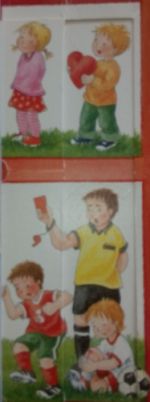
There’s a book about tools. Fair enough, both the boy and the girl are shown working with the tools equally. Their father shows them everything. And who’s in the background, doing the garden and bringing drinks? Of course, what else would she do?
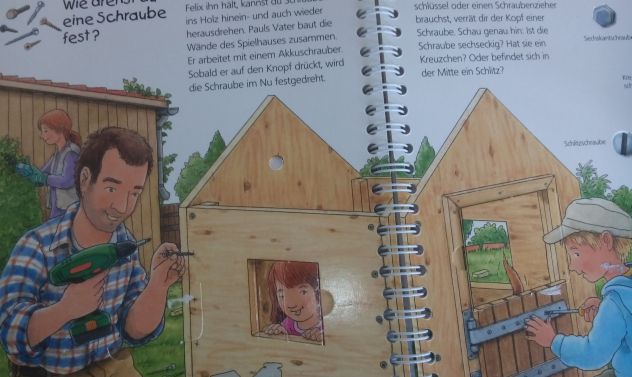
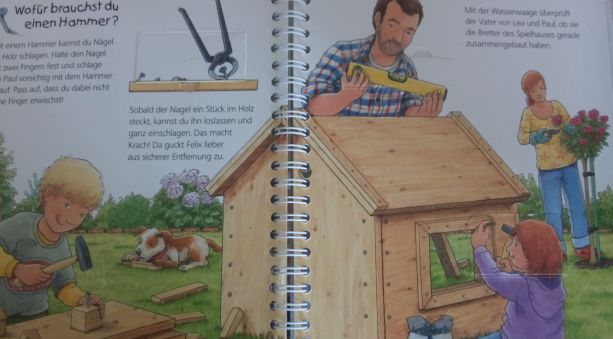
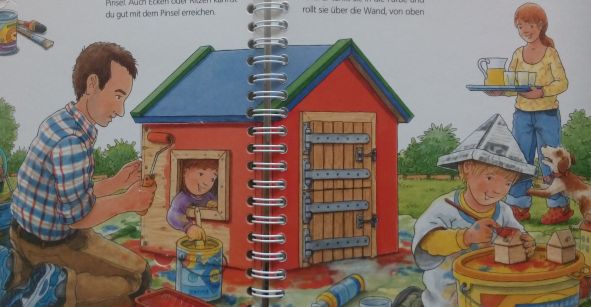
Gunilla Bergström wrote some wonderful children’s books in the 70s about Willi Wiberg. In one story, Willi has a girl as a friend and the book goes out of its way to show how different and just like a boy this girl is, so that Willi can feel okay for playing with her. To make this clear, there are four pages of typical girl clichés (they cry, they want to be pretty, they are nice, etc.), just to say: ‘Well, she is not like that.’ But won’t all those clichés stay stuck in the young readers’ brains?
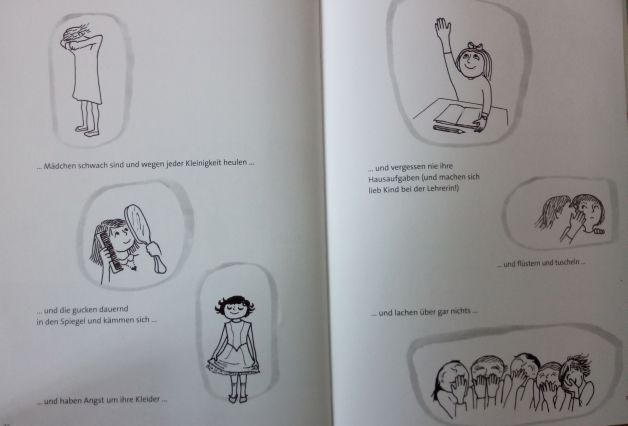
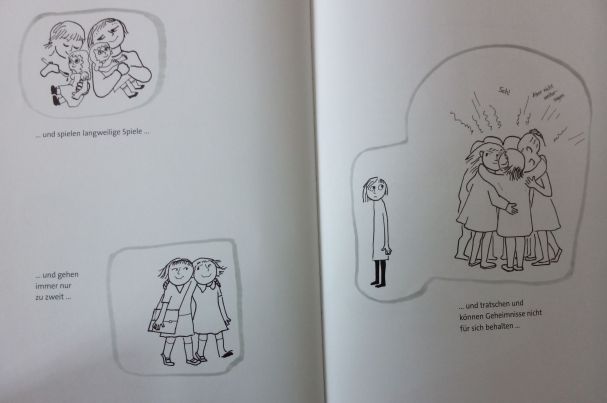
But there are also positive examples. A hospital books shows male nurses and a police book features many police women, even on the cover.
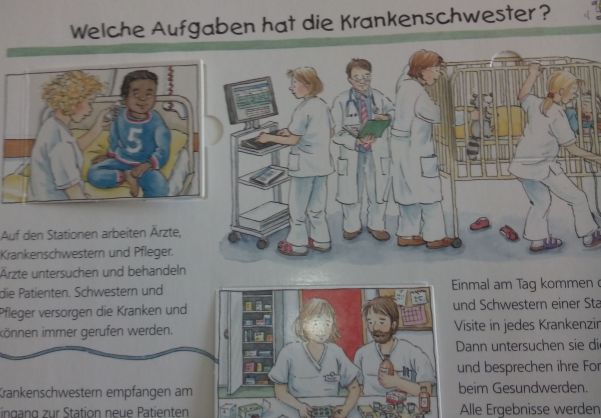
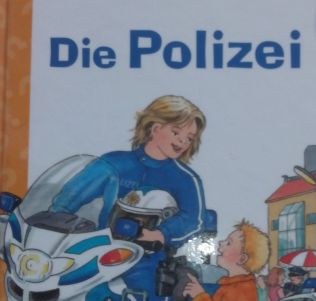
The same book has an amazing illustration of a police dog and his owner, who are allowed to go into retirement after some years. Never too soon to sell the concept of how great it is not to have to work anymore!
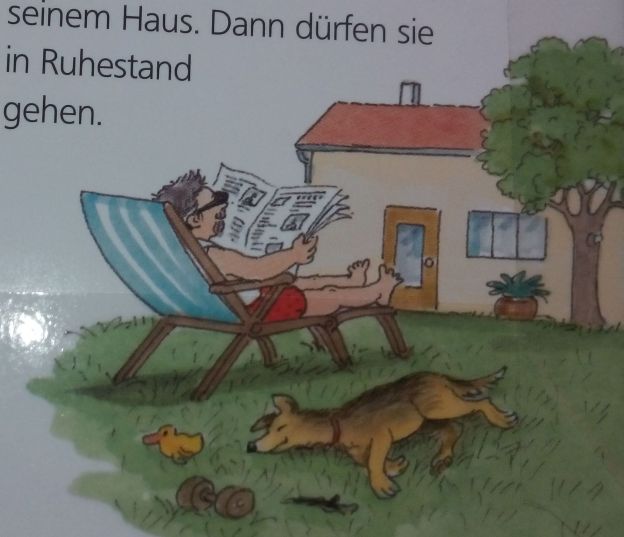
A book about the different sense shows a wonderfully diverse table of kids eating food.
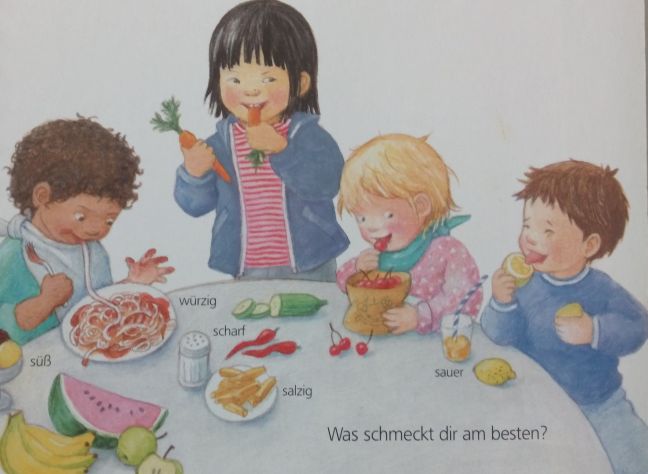
The aforementioned hospital book though shows that also psychologists work in a hospital for people who ‘have sorrows.’ Is it really necessary to use a woman with a headscarf for this moment? Do we really have to suggest that they are more in need of help than anyone else?
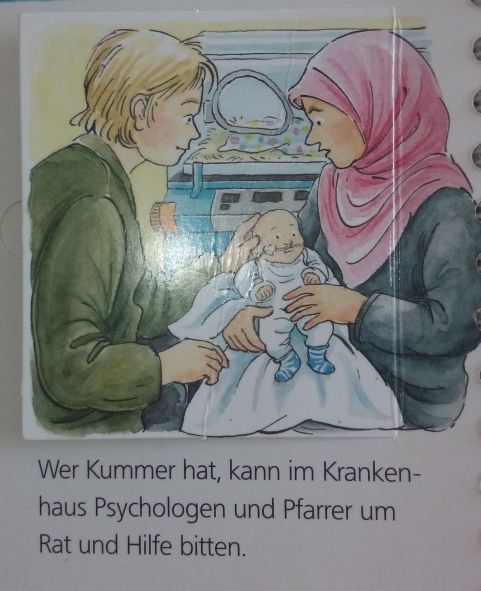
And while we’re at stereotypes, here’s an example of ‘How people live elsewhere.’ Tents in ‘the desert’, an igloo built by Nanook and a hut made of grass in, yes, ‘Africa.’ I never get tired of using Africa as a generic term for specific tribes and countries.
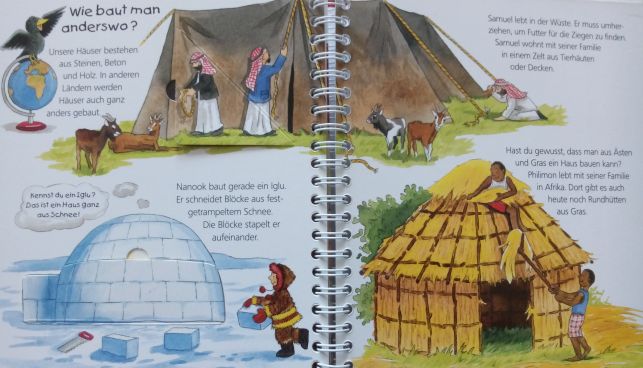
Let’s get to animals. Books about farms are often the worst because they do everything to sell the image of happy animals being willingly exploited for us. A cow gives milk. Why? For us. And the book consoles us: ‘Don’t worry, it doesn’t hurt the cows!’ I’m glad we asked them. And the sheep having their wool shaved off? ‘Don’t worry, until the cold winter comes, it will grow back!’ If a book tells me twice not to worry, I would start to worry.
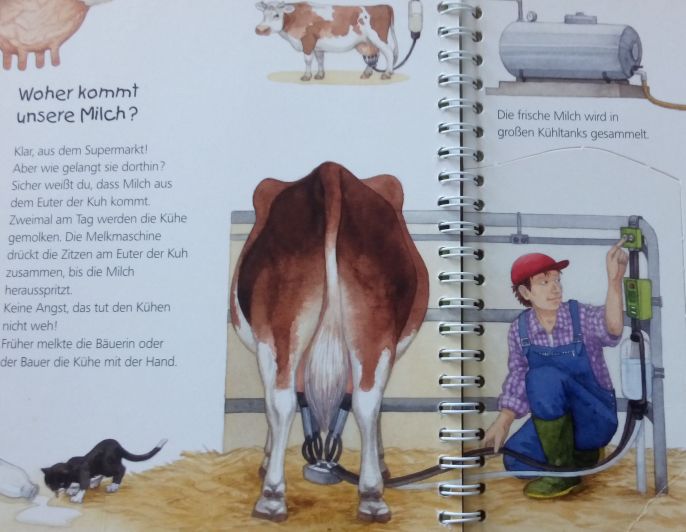
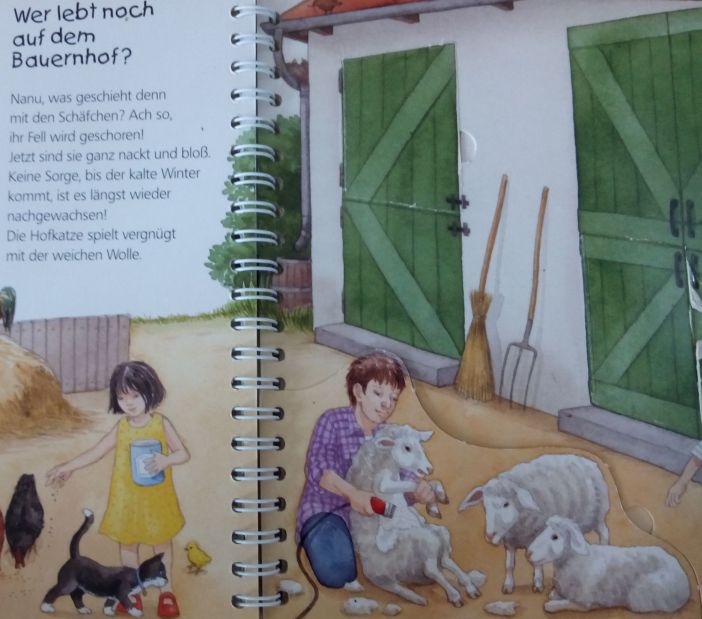
And then there is the incredibly scary image of a big harvester about to shred some cute hamsters and rabbits. But hey, don’t worry, ‘those animals have good ears, they can hear the harvester from far away and flee in time.’ Judging from that image, which shows a mouse nest, their ears aren’t so great after all. Good thing ‘the sharp knives of the harvester’ are mentioned too, just in case the imagination doesn’t do its job.
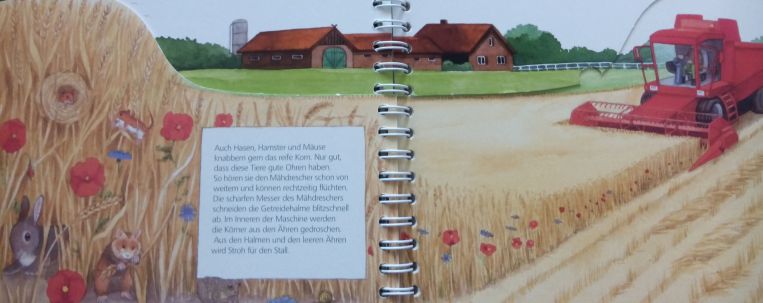
There is a book called ‘Dangerous Animals,’ which I find problematic because the subjectivity of that title is so strong and it implies that some animals are inherently more dangerous (bad? evil?) than others. The last page then asks the question ‘Do we also have to protect dangerous animals?’ and while the answer in the book of course is ‘yes’, I can’t help but think that the question alone sets some parameters in kids’ brains because if you ask, the answer could have been ‘no.’ As if that is a question to think about before you answer it.
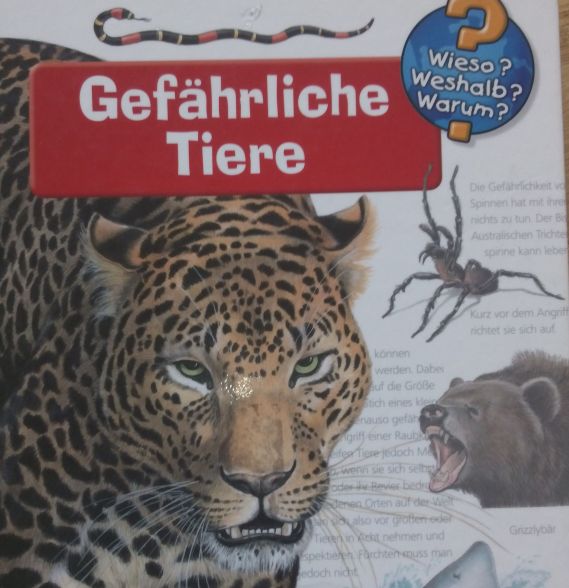
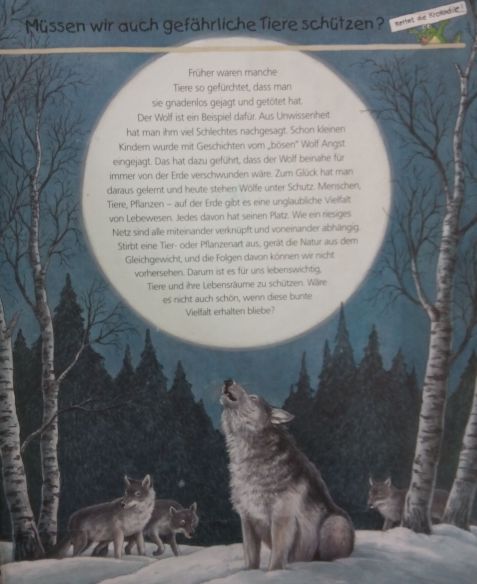
The book Good Night, Gorilla is set in a zoo, so it’s problematic from the get-go, if you have a problem with zoos. On the other hand, the protagonist (the gorilla) frees all of the animals in the zoo because the zookeeper Joe doesn’t notice that his keys are gone. Animal Liberation! But then his wife brings them all back, because that’s just not how things work. Only the gorilla and the mouse get to sleep in the zookeepers’ bed. So, only partial animal liberation. (It’s still a cute book.)
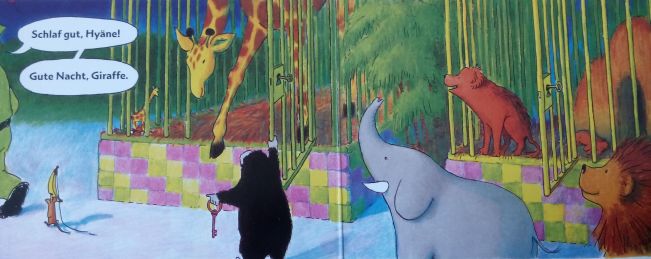
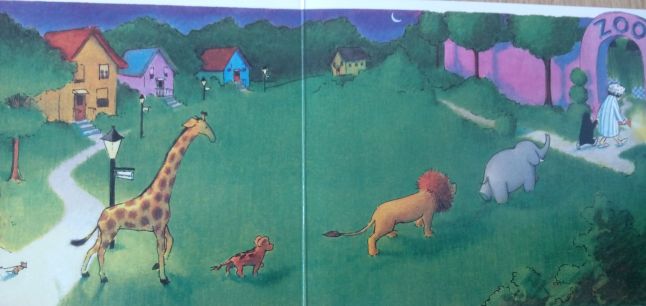
Christopher Wormell’s One Smart Fish is a great book about evolution and it would be great just for its final page alone, which tries to capture all of evolution in one stroke, making it very clear that we are just one part of a big and long existing whole.
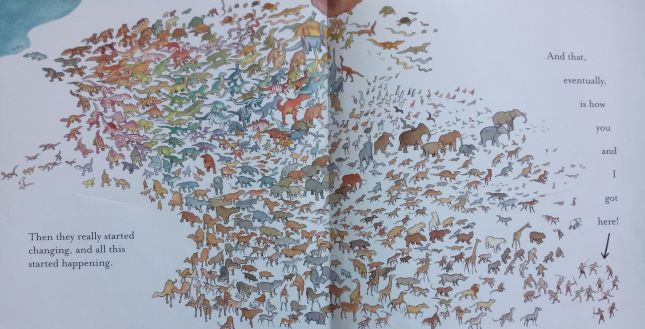
Leo Lionni’s Frederick tells the story of the mouse Frederick, who doesn’t want to work all day like all the others who are busy preparing for winter. But unexpectedly, Frederick does not have to learn in the end that he should have done something too, he gets to save the day by being a poet who can tell the bored mice about sunbeams, colors and seasons. I love that book’s victory of art over work.
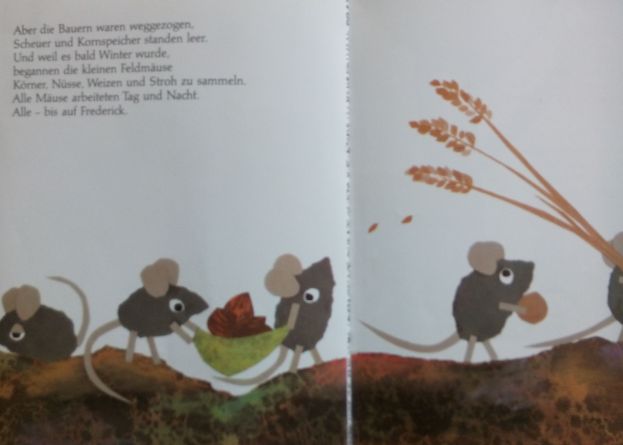
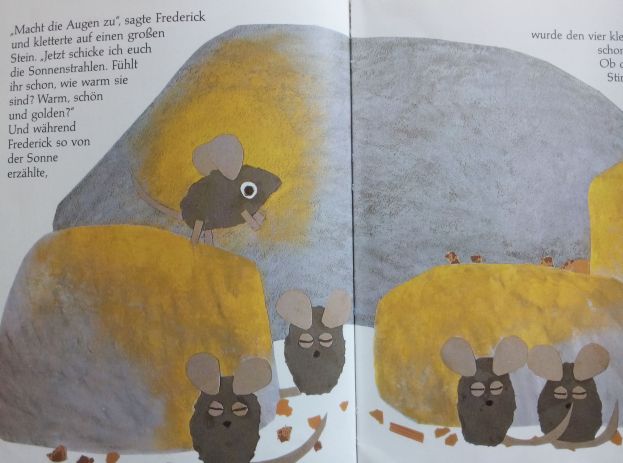
Julia Donaldson and Axel Scheffler’s The Snail and the Whale have a nice little moment in a school, showing an authoritative teacher who just says ‘Sit straight! Don’t talk!’ but is interrupted by the snail and her wonderful ‘Save the Whale!’ message.
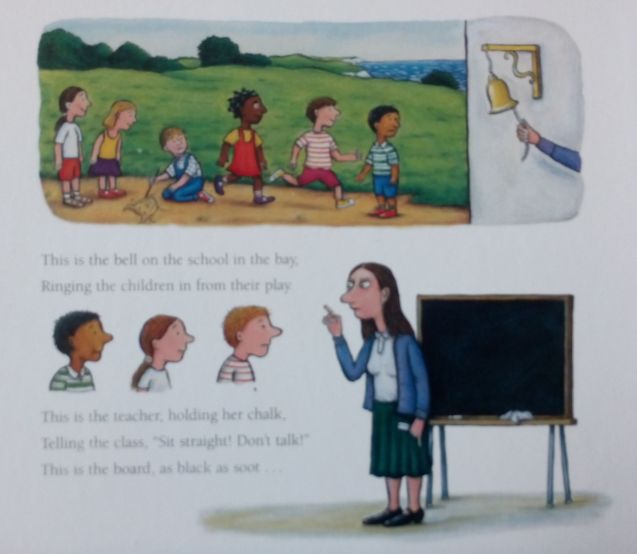
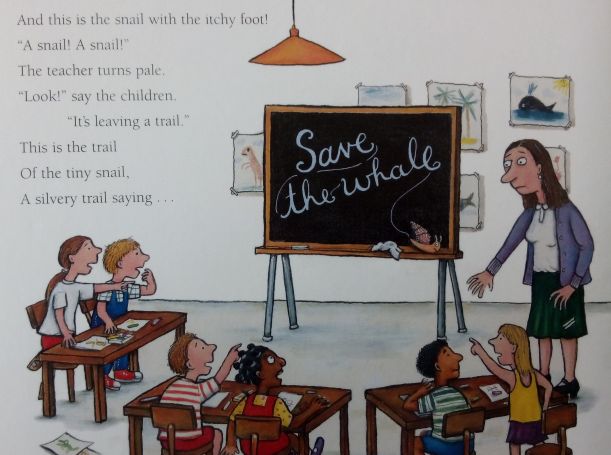
Anthony Browne’s amazing Voices in the Park features a scene of realistic, dark street life that is not scared of showing how things in the outside world can really be. A jobless father passing a jobless Santa Claus is just brilliant.
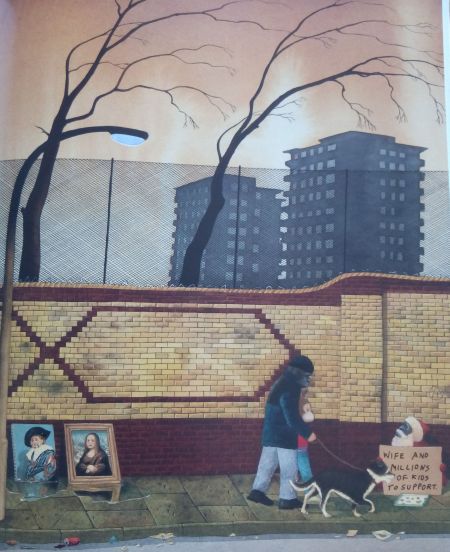
And finally a wonderfully odd moment from a typical ‘crowded image’ book in which kids can find many details. Here we are shown some standard city life that not only includes a bank robbery but also a demonstration. The signs just say ‘We are against it!’, ‘Now it’s enough!’ and ‘Not with us!’ I really adore the offbeatness of this, in the middle of typical images of playgrounds, public baths and zoos.
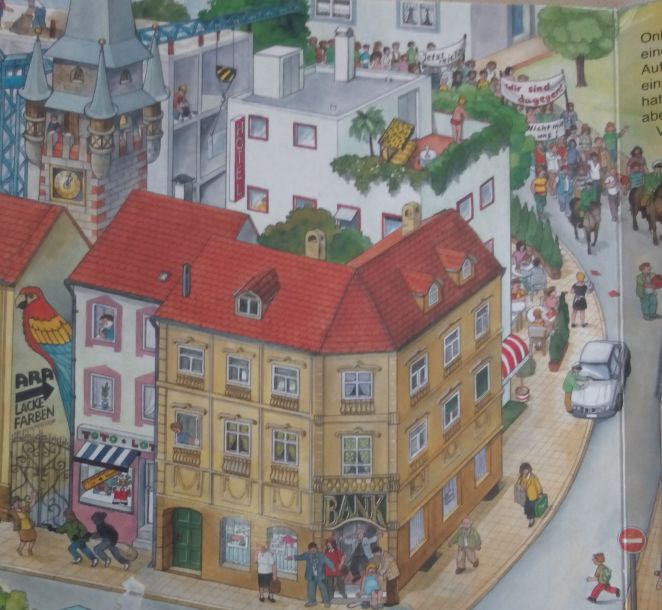
And that’s it for now. I enjoyed this and will do it again, when I have collected more new examples. Maybe I’ll also feature some really outstanding children’s books, like some of Dr. Seuss or the metafiction of Mo Willems.
